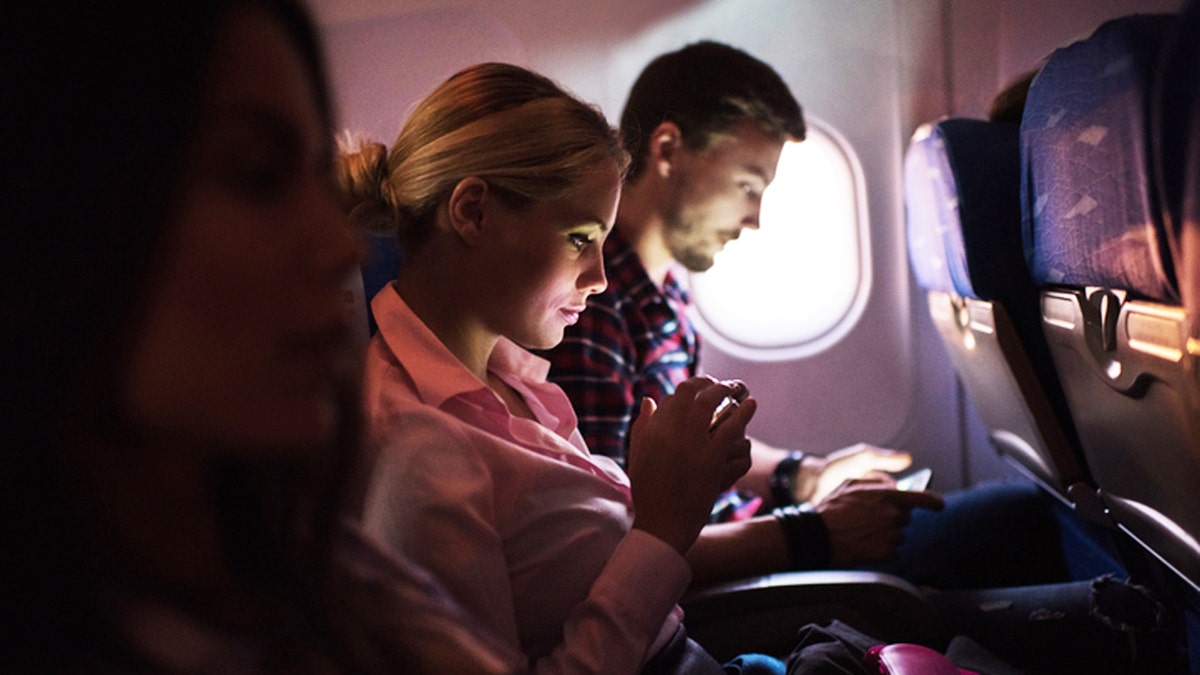
People traveling by airplane. Focus is on young woman text messaging. (iStock)
Airplanes are curious places. From how the toilet flushes when you're 40,000 feet in the air to why those windows have tiny holes in them, there are a lot of questions that pop up when you've got hours to sit in a tight space with nowhere else to go. So, how about those airplane lighting systems?
According to an article in the Journal of Consumer Psychology, the more intense a light is, the more intense human emotions will be. Much of the light that is streaming in through airplane windows is incredibly soft: Makes since, since an airplane full of overly emotional human beings would be bad.
Many newer airplanes are looking to incorporate LED lights, according to Bloomberg, which not only last longer, but also change the overall vibe of the cabin.
“We’ve always wanted to create a different kind of atmosphere aboard our aircraft and light plays exactly into our hands,” Nik Lusardi, design manager at Virgin Atlantic Airways, told Bloomberg. “You can get people energized or you can relax people very, very quickly.”
More From Travel + Leisure
According to City Lab, the A350 XWB airplane houses LED lights with the ability to create 16.7 million different colors.
Aircraft manufacturers are also looking to lighting systems to not only calm, but also refresh passengers. (So you won't feel like you've lost an entire night's sleep.)
Mood lighting also plays a role on an airplane, and Virgin America is the U.S. carrier most devoted to the art. The soft neon glow of the cabin has become synonymous with the company name. According to the airline, the pink and purple color palette helped calm passengers during the boarding process. Passengers on the airline's flights may notice color changes throughout the flight, and each color has a different purpose: to induce better deep sleep, to gradually wake passengers up, and to energize them.
Aside from battling jet lag and keeping everyone calm and collected, in-flight lighting can also play mind tricks on those aboard.
By turning town the lights in a cabin, crew members are able to attempt to shorten your day—or make it longer—depending on the time of day at the final destination. A team of researchers from Stanford helped Airbus create a lighting system that seamlessly mimicked various times of the day for an easier trans-continental transition.
